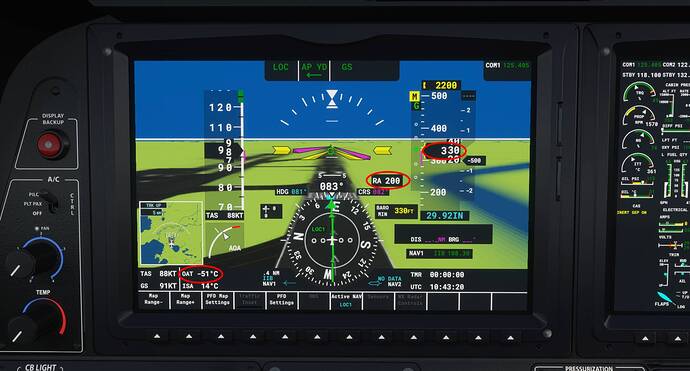It seems like temperature is not taken into account in altimetry. In the real world we need to correct the indicated altitude for cold temperature (below 0C at ground level). In MSFS temperature has absolutely no effect on the true altitude. I flew an ILS approach at my local airport down to baro-minima of 330 ft (200 ft DH) with -50C, the radio altitude was indicating 200 ft, I paused the sim and changed the temperature to +45C, the indicated altitude does not change at all! In my opinion this should have been an area of focus for the previous update together with improving the icing effects instead of visual goodies like snow and frozen lakes (although nice, preferably I want both).
OAT -50C
OAT +45C
Btw: when looking closely you can spot the (blue) bearing pointer overlapping with the (green) CDI needle, pointing to the localizer antenna. In real life it is not possible to receive a bearing to / from a localizer antenna. Also the “ISA” is not showing ISA deviation as it should on the real G3000.

